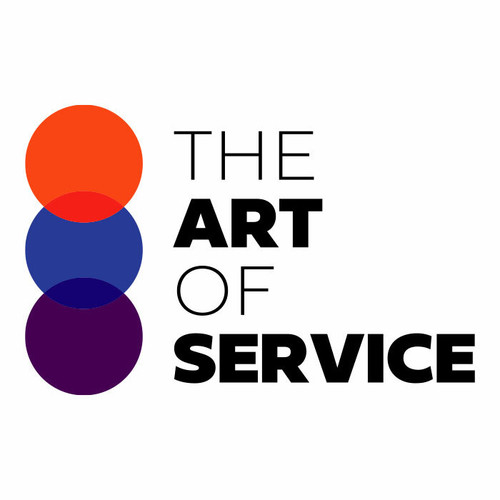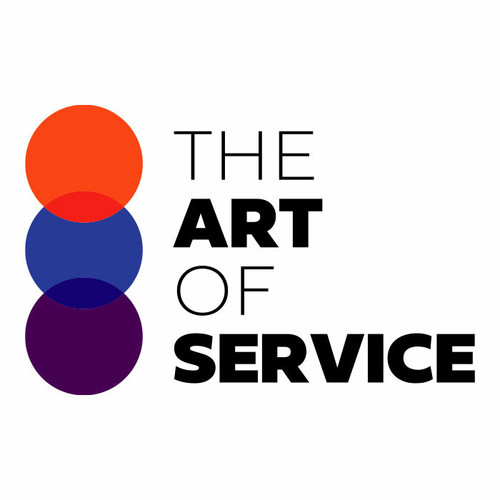By making it easy to collect, understand, and act on Employee Feedback, you enable People teams to make better decisions, demonstrate impact, and turn organization culture into a Competitive Edge.
More Uses of the Employee Feedback Toolkit:
- Lead: continually evaluate environment for opportunities to proactively manage risk and improve processes based on observation, review, and Employee Feedback.
- Establish: Employee Feedback shares how very rewarding activities are.
- Supervise: measurable difference in turnover metrics and positive Employee Feedback on the on boarding and in boarding process, and Development Planning.
- Collect and interpret Employee Feedback received through a variety of other formal and informal avenues.
- Administer, collect and act on Employee Feedback surveys.
- Confirm your group gives and receives Employee Feedback.
- Encourage Employee Feedback through formal and informal channels.
- Support Employee Feedback surveys.
- Warrant that your enterprise provides Employee Feedback and support, conducts Performance Evaluations and resolves individual and group Performance Issues.
- Be accountable for working closely with property/corporate leadership identify, develop and implement action plans to address Employee Feedback.
- Create an inclusive environment where Employee Feedback facilitates positive change.
- Develop structured mechanisms to facilitate Continuous Improvement of processes and technology based on Employee Feedback.
- Evaluate: design, collect, and analyze multiple levels of Employee Feedback.
- Measure Employee Feedback and sentiment across Internal Communications channels; use a Data Driven approach to identify opportunities for Continuous Improvement.
- Create or adapt engagement methods to promote the integration of Employee Feedback as key Stakeholder Input on strategic projects.
- Govern: effective in detailing case notes and providing counsel on written Employee Feedback.
Save time, empower your teams and effectively upgrade your processes with access to this practical Employee Feedback Toolkit and guide. Address common challenges with best-practice templates, step-by-step Work Plans and maturity diagnostics for any Employee Feedback related project.
Download the Toolkit and in Three Steps you will be guided from idea to implementation results.
The Toolkit contains the following practical and powerful enablers with new and updated Employee Feedback specific requirements:
STEP 1: Get your bearings
Start with...
- The latest quick edition of the Employee Feedback Self Assessment book in PDF containing 49 requirements to perform a quickscan, get an overview and share with stakeholders.
Organized in a Data Driven improvement cycle RDMAICS (Recognize, Define, Measure, Analyze, Improve, Control and Sustain), check the…
- Example pre-filled Self-Assessment Excel Dashboard to get familiar with results generation
Then find your goals...
STEP 2: Set concrete goals, tasks, dates and numbers you can track
Featuring 999 new and updated case-based questions, organized into seven core areas of Process Design, this Self-Assessment will help you identify areas in which Employee Feedback improvements can be made.
Examples; 10 of the 999 standard requirements:
- If no one would ever find out about your accomplishments, how would you lead differently?
- Have the types of risks that may impact Employee Feedback been identified and analyzed?
- Why do you expend time and effort to implement measurement, for whom?
- When information truly is ubiquitous, when reach and connectivity are completely global, when Computing Resources are infinite, and when a whole new set of impossibilities are not only possible, but happening, what will that do to your business?
- What is the recognized need?
- How do you verify and validate the Employee Feedback data?
- Is pre-qualification of suppliers carried out?
- What is your Employee Feedback quality Cost segregation study?
- What is Employee Feedback risk?
- Is the Quality Assurance team identified?
Complete the self assessment, on your own or with a team in a workshop setting. Use the workbook together with the self assessment requirements spreadsheet:
- The workbook is the latest in-depth complete edition of the Employee Feedback book in PDF containing 994 requirements, which criteria correspond to the criteria in...
Your Employee Feedback self-assessment dashboard which gives you your dynamically prioritized projects-ready tool and shows your organization exactly what to do next:
- The Self-Assessment Excel Dashboard; with the Employee Feedback Self-Assessment and Scorecard you will develop a clear picture of which Employee Feedback areas need attention, which requirements you should focus on and who will be responsible for them:
- Shows your organization instant insight in areas for improvement: Auto generates reports, radar chart for maturity assessment, insights per process and participant and bespoke, ready to use, RACI Matrix
- Gives you a professional Dashboard to guide and perform a thorough Employee Feedback Self-Assessment
- Is secure: Ensures offline Data Protection of your Self-Assessment results
- Dynamically prioritized projects-ready RACI Matrix shows your organization exactly what to do next:
STEP 3: Implement, Track, follow up and revise strategy
The outcomes of STEP 2, the self assessment, are the inputs for STEP 3; Start and manage Employee Feedback projects with the 62 implementation resources:
- 62 step-by-step Employee Feedback Project Management Form Templates covering over 1500 Employee Feedback project requirements and success criteria:
Examples; 10 of the check box criteria:
- Cost Management Plan: Eac -estimate at completion, what is the total job expected to cost?
- Activity Cost Estimates: In which phase of the Acquisition Process cycle does source qualifications reside?
- Project Scope Statement: Will all Employee Feedback project issues be unconditionally tracked through the Issue Resolution process?
- Closing Process Group: Did the Employee Feedback Project Team have enough people to execute the Employee Feedback Project Plan?
- Source Selection Criteria: What are the guidelines regarding award without considerations?
- Scope Management Plan: Are Corrective Actions taken when actual results are substantially different from detailed Employee Feedback Project Plan (variances)?
- Initiating Process Group: During which stage of Risk planning are risks prioritized based on probability and impact?
- Cost Management Plan: Is your organization certified as a supplier, wholesaler, regular dealer, or manufacturer of corresponding products/supplies?
- Procurement Audit: Was a formal review of tenders received undertaken?
- Activity Cost Estimates: What procedures are put in place regarding bidding and cost comparisons, if any?
Step-by-step and complete Employee Feedback Project Management Forms and Templates including check box criteria and templates.
1.0 Initiating Process Group:
- 1.1 Employee Feedback project Charter
- 1.2 Stakeholder Register
- 1.3 Stakeholder Analysis Matrix
2.0 Planning Process Group:
- 2.1 Employee Feedback Project Management Plan
- 2.2 Scope Management Plan
- 2.3 Requirements Management Plan
- 2.4 Requirements Documentation
- 2.5 Requirements Traceability Matrix
- 2.6 Employee Feedback Project Scope Statement
- 2.7 Assumption and Constraint Log
- 2.8 Work Breakdown Structure
- 2.9 WBS Dictionary
- 2.10 Schedule Management Plan
- 2.11 Activity List
- 2.12 Activity Attributes
- 2.13 Milestone List
- 2.14 Network Diagram
- 2.15 Activity Resource Requirements
- 2.16 Resource Breakdown Structure
- 2.17 Activity Duration Estimates
- 2.18 Duration Estimating Worksheet
- 2.19 Employee Feedback project Schedule
- 2.20 Cost Management Plan
- 2.21 Activity Cost Estimates
- 2.22 Cost Estimating Worksheet
- 2.23 Cost Baseline
- 2.24 Quality Management Plan
- 2.25 Quality Metrics
- 2.26 Process Improvement Plan
- 2.27 Responsibility Assignment Matrix
- 2.28 Roles and Responsibilities
- 2.29 Human Resource Management Plan
- 2.30 Communications Management Plan
- 2.31 Risk Management Plan
- 2.32 Risk Register
- 2.33 Probability and Impact Assessment
- 2.34 Probability and Impact Matrix
- 2.35 Risk Data Sheet
- 2.36 Procurement Management Plan
- 2.37 Source Selection Criteria
- 2.38 Stakeholder Management Plan
- 2.39 Change Management Plan
3.0 Executing Process Group:
- 3.1 Team Member Status Report
- 3.2 Change Request
- 3.3 Change Log
- 3.4 Decision Log
- 3.5 Quality Audit
- 3.6 Team Directory
- 3.7 Team Operating Agreement
- 3.8 Team Performance Assessment
- 3.9 Team Member Performance Assessment
- 3.10 Issue Log
4.0 Monitoring and Controlling Process Group:
- 4.1 Employee Feedback project Performance Report
- 4.2 Variance Analysis
- 4.3 Earned Value Status
- 4.4 Risk Audit
- 4.5 Contractor Status Report
- 4.6 Formal Acceptance
5.0 Closing Process Group:
- 5.1 Procurement Audit
- 5.2 Contract Close-Out
- 5.3 Employee Feedback project or Phase Close-Out
- 5.4 Lessons Learned
Results
With this Three Step process you will have all the tools you need for any Employee Feedback project with this in-depth Employee Feedback Toolkit.
In using the Toolkit you will be better able to:
- Diagnose Employee Feedback projects, initiatives, organizations, businesses and processes using accepted diagnostic standards and practices
- Implement evidence-based Best Practice strategies aligned with overall goals
- Integrate recent advances in Employee Feedback and put Process Design strategies into practice according to Best Practice guidelines
Defining, designing, creating, and implementing a process to solve a business challenge or meet a business objective is the most valuable role; In EVERY company, organization and department.
Unless you are talking a one-time, single-use project within a business, there should be a process. Whether that process is managed and implemented by humans, AI, or a combination of the two, it needs to be designed by someone with a complex enough perspective to ask the right questions. Someone capable of asking the right questions and step back and say, 'What are we really trying to accomplish here? And is there a different way to look at it?'
This Toolkit empowers people to do just that - whether their title is entrepreneur, manager, consultant, (Vice-)President, CxO etc... - they are the people who rule the future. They are the person who asks the right questions to make Employee Feedback investments work better.
This Employee Feedback All-Inclusive Toolkit enables You to be that person.
Includes lifetime updates
Every self assessment comes with Lifetime Updates and Lifetime Free Updated Books. Lifetime Updates is an industry-first feature which allows you to receive verified self assessment updates, ensuring you always have the most accurate information at your fingertips.







